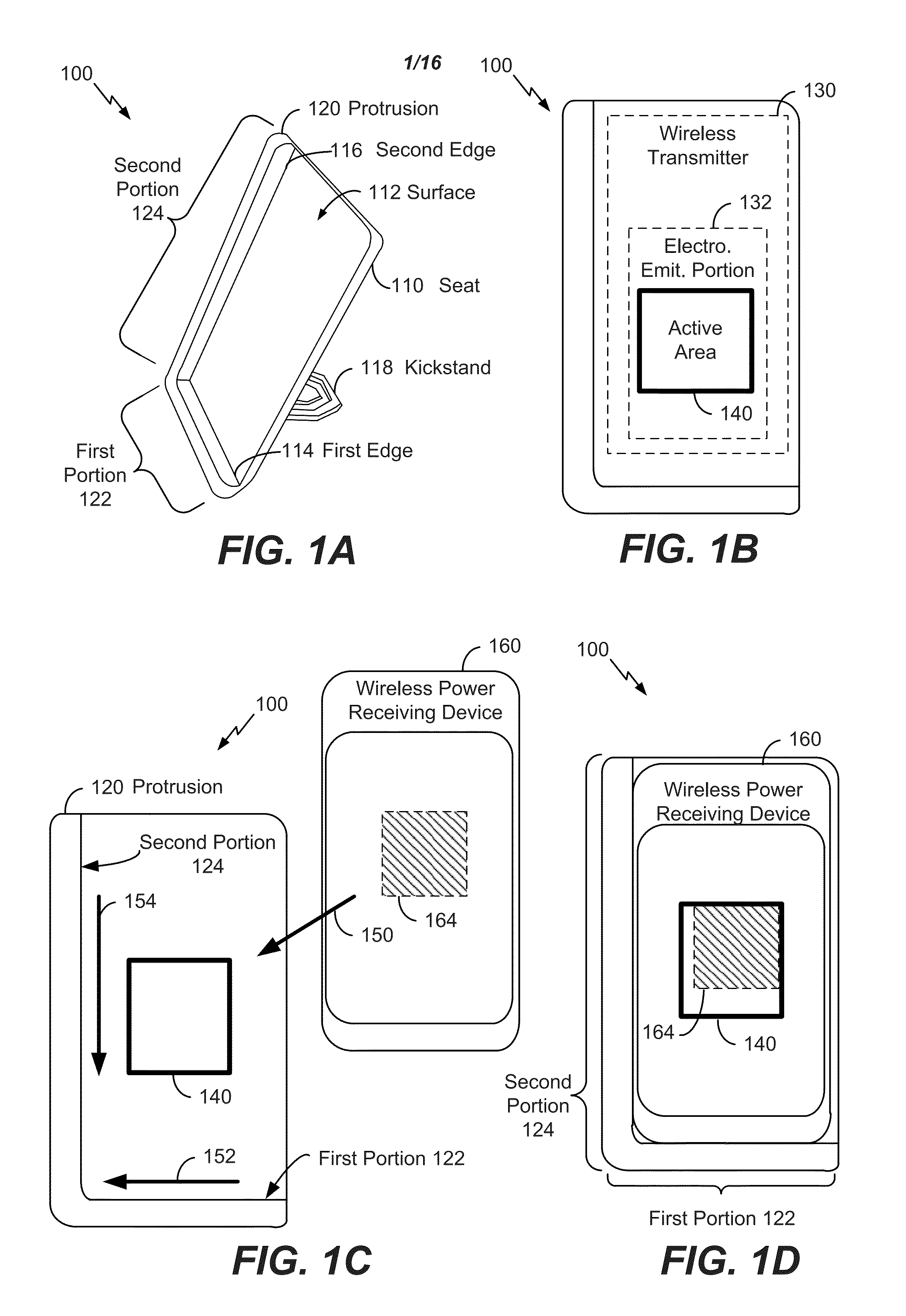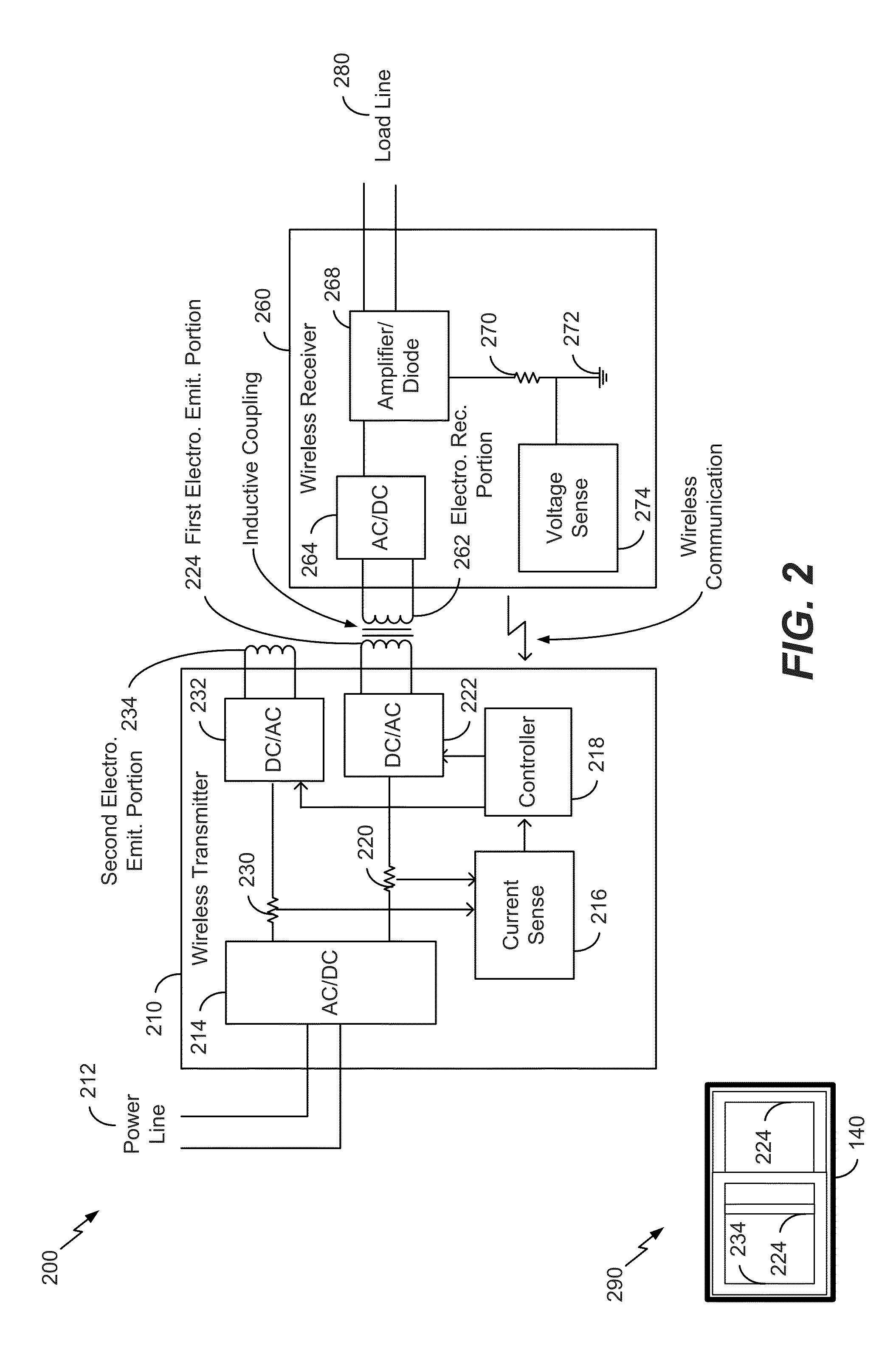Wireless power transmitting device
a power transmitting device and wireless technology, applied in the direction of transformers, inductances, transportation and packaging, etc., can solve the problems of low efficiency or not at all of power transfer, additional components and complexity, and the cost of producing each charging pad, so as to facilitate the alignment of the wireless receiver, reduce the complexity and the cost of the wireless transmitter, and reduce the ability of a user.
- Summary
- Abstract
- Description
- Claims
- Application Information
AI Technical Summary
Benefits of technology
Problems solved by technology
Method used
Image
Examples
Embodiment Construction
[0022]Particular embodiments of the present disclosure are described below with reference to the drawings. In the description, common features are designated by common reference numbers throughout the drawings.
[0023]Referring to FIGS. 1A-D, multiple views of a wireless power transmitting device 100 are shown. The wireless power transmitting device 100 may be configured to wirelessly transfer power to at least one wireless power receiving device, such as a wireless power receiving device 160. The wireless power transmitting device 100 may also be configured to transfer power to different wireless power receiving device models of different receiving device types. For example, the wireless power receiving device 160 may include a mobile device, such as a mobile communication device or a tablet computer, a toothbrush, a game console controller, a global positioning system (GPS) device, a Bluetooth headset, another device configured to wirelessly receive power, or a combination thereof. ...
PUM
| Property | Measurement | Unit |
|---|---|---|
| angle | aaaaa | aaaaa |
| angle | aaaaa | aaaaa |
| angle | aaaaa | aaaaa |
Abstract
Description
Claims
Application Information
 Login to View More
Login to View More - R&D
- Intellectual Property
- Life Sciences
- Materials
- Tech Scout
- Unparalleled Data Quality
- Higher Quality Content
- 60% Fewer Hallucinations
Browse by: Latest US Patents, China's latest patents, Technical Efficacy Thesaurus, Application Domain, Technology Topic, Popular Technical Reports.
© 2025 PatSnap. All rights reserved.Legal|Privacy policy|Modern Slavery Act Transparency Statement|Sitemap|About US| Contact US: help@patsnap.com



